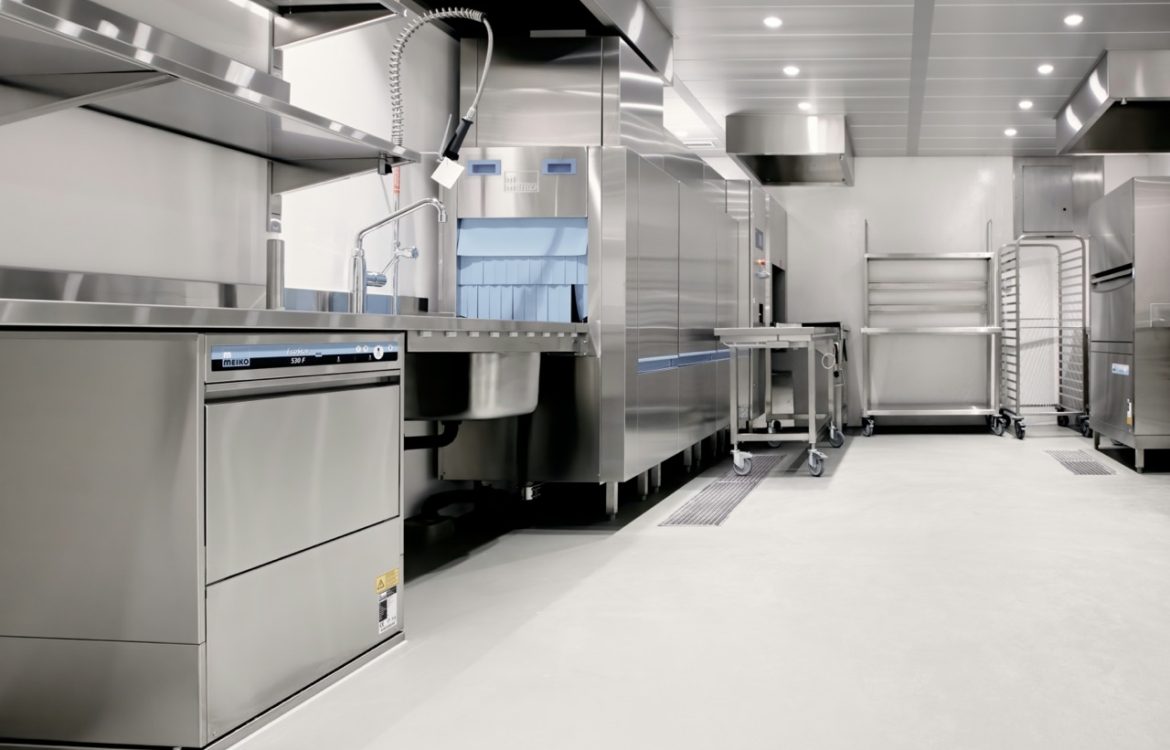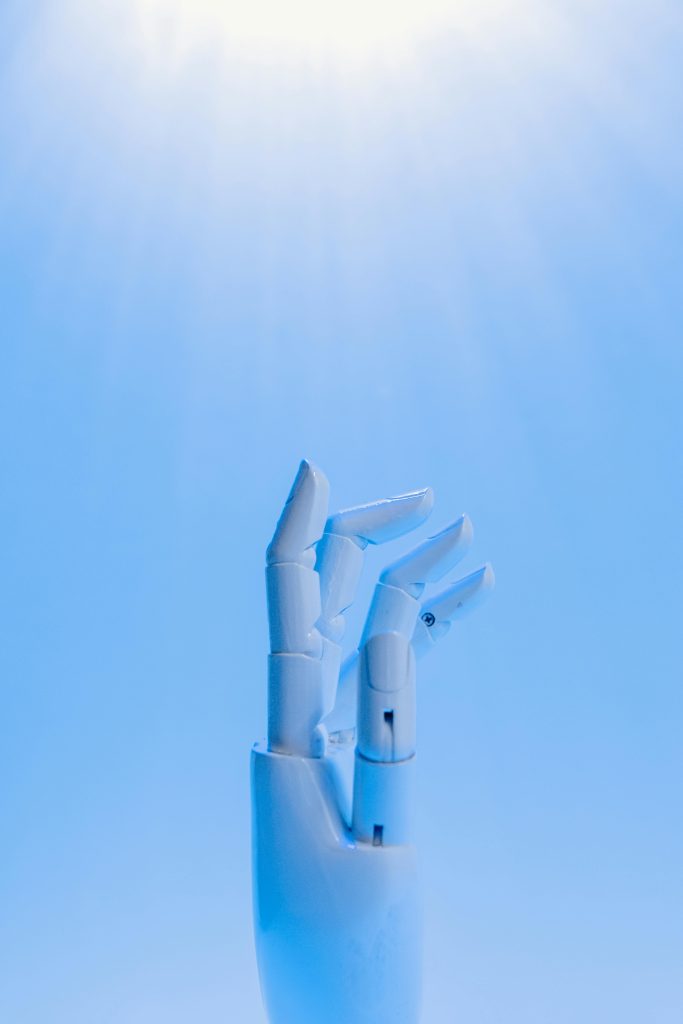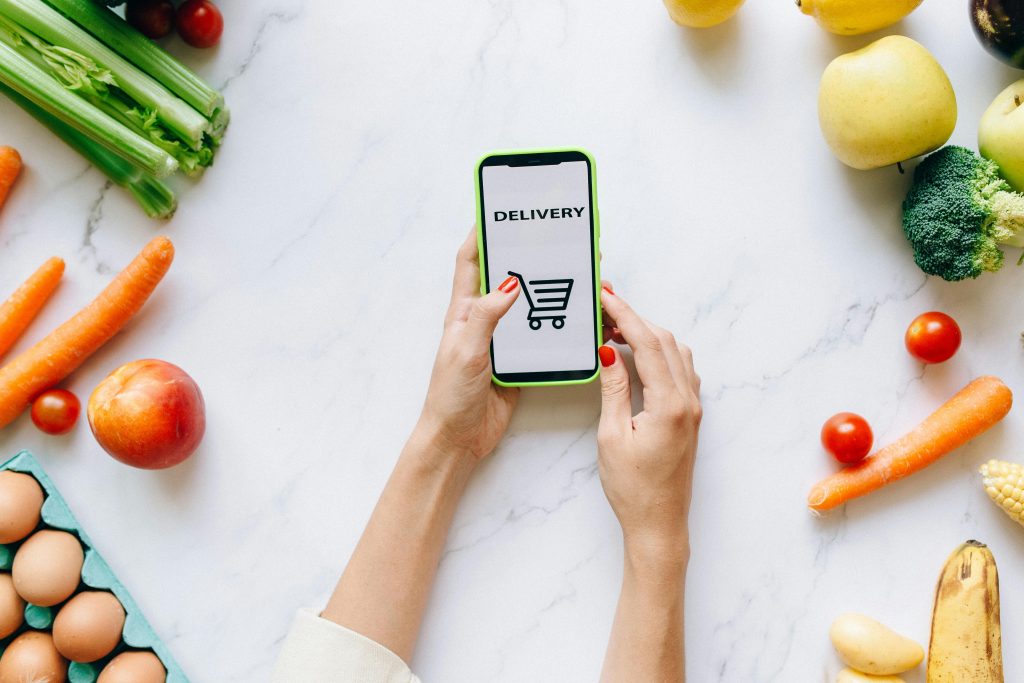
Predictive Packing: AI-Driven Kitchen Automation for Faster Dispatch
1. Getting started with the world of predictive packaging: who we are and why we’re interested
With speed and accuracy being the success drivers of the foodservice world today, predictive packaging has come to the forefront and transformed the processes in the kitchen thanks to food delivery app development services that seamlessly link digital orders to physical production. Celadonsoft feels honored to stand in the vanguard of this technological revolution, offering solutions whose potential could revolutionize the way food items are packaged and shipped.
So, what is predictive packaging?
Predictive packaging
In short, it’s an intelligent system that employs artificial intelligence computations, statistical modeling, and automation to optimize the packaging and shipping of food according to demand, prep time, and logistical limitations. It’s no question of stuffing food mechanically into boxes — but an intelligent procedure that’s embedded in the supply chain and adjusts and foresees future demand in its ongoing development.
Why does this matter?
- Rapid order fulfillment. Accurate forecasting of package volume and timing reduces delays, which is critical for high service velocity.
- Waste reduction. Predictive packaging avoids the production of surplus and leftovers, which benefits economics as well as ecology.
- Increased customer satisfaction. Quick, high-quality packaging maintains freshness and appearance, which influences the brand image directly.
- Optimization of storage and kitchen resources. Workloads are assigned by AI, preventing staff overload and minimizing packaging material usage.
Table 1: Main advantages of predictive packaging
| Advantage | Description |
| Speed of order process | Rapid packaging supported by predetermined specifications in advance |
| Minimization of waste | Estimation of the actual quantity amount required |
| Quality improvement | Maintaining dishes fresh and appealing |
| Efficient planning | Economic use of material and labor |
The reality here isn’t that predictive packaging is merely an optimized operation method but an entirely new multidimensional understanding of the smart whole of the kitchen. Instead of reacting only to existing demand, those with such technologies start to anticipate and prep ahead for shifts in the demand and for what will come next.
That means calling for agile and scalable infrastructure — infrastructure that’s able to accommodate current equipment and embrace new business models at short notice.
Celadonsoft provides complete solutions in which each link in the chain — from order details right through to packaging operations — works in concert with the others, setting the stage for smoother, more up-to-date production. Next, we will examine closely the ways AI is reshaping the food industry and the tech innovations that have already become successful. One thing already becomes clear: predictive packaging isn’t fleeting but the cornerstone for the restaurant business of the future.

2. AI in the Kitchen: How Technology Is Revolutionizing Gastronomy
Gastronomy today isn’t art and craft anymore — it’s an arena where AI walks in with new standards. Food delivery app development services integrate these standards into consumer-facing platforms, ensuring a friction-free experience from menu to doorstep. At Celadonsoft, our artificial intelligence makes traditional processes change, elevating the culinary arts to new levels of quality and productivity. Why AI, then?
Because it can process massive amounts of data, learn from novel experiences, and make choices on its own — invaluable in the kitchen.
Technologies pervade gastronomy through several key channels:
- Personalized menu planning: AI assesses clients’ nutritional requirements and preferences and makes individualized recommendations and creates dynamic menus reacting to order signals in real time.
- Quality control: AI ensures food freshness and temperature accuracy of cooking using cameras and sensors, keeping the chances of error low.
- Process optimization: Automating repetitive tasking optimizes staff workload so that they can concentrate on creative work.
Thus, AI in culinary applications improves the speed and accuracy with which one creates new culinary experiences on the basis of data and predictive analytics.
3. Process automation: from cooking to packaging
Automation of the kitchen isn’t the future but current reality — Celadonsoft proudly sets the pace. To gauge the scope of the change automation does, take a look at major milestones where AI and robotics go hand in hand:
- Preparation: Robots and intelligent solutions automate recipes, dosing, timing, and heat, removing the sources of human error. They offer consistent dish quality, which is crucial in high-usage areas.
- Portioning and packaging: AI initiates predictive packaging — analyzing live-demand data and packaging only as many portions that are needed, minimizing the usage of packaging materials. Automatic lines with sensors monitor sealing and proper labeling.
- Monitoring and control: Highly advanced software tracks equipment speed, detects bottlenecks, and suggests real-time adjustments.
Business automation offers many advantages:
- Faster order process
- Reduces labour and raw materials costs
- Improving product standardization and quality
- Minimized human error and food waste
For the IT staff managing such a setup, integration of all these elements — sensors, machines, analytics program, and cloud services — becomes paramount. Here, Celadonsoft offers end-to-end solutions with AI acting as the glue that ensures the entire kitchen setup runs smoothly.

4. Forecasting demand: minimizing food waste through AI
In an era of efficiency and sustainability being the highest priority for food business growth, reliable forecasting of consumer demand comes foremost. Celadonsoft does not merely perceive artificial intelligence (AI) as the technological upgrade but rather as a business strategy for minimizing surplus products and with them, food waste.
Why AI? Traditional methods of demand analysis typically rely on historical data and managerial experience, which may not always be accurate. AI, rooted in multi-dimensional analytics and machine learning, considers dozens of variables — from season and climate to real-time patterns and regional events.
The fundamental AI capabilities for demand forecasting are:
- Multichannel data analysis. Leveraging data from multiple sources: order systems, social media, news feeds, and external holiday and weather APIs.
- Dynamic updates of the forecast. Each new order that’s booked instantly updates the model — enabling real-time adaption.
- Dish and customer segmentation. Dividing product ranges and audiences into categories by characteristics for more precise individual taste consideration.
- Determining the optimal amount of production and buying. The last goal — minimizing leftovers and excess inventory.
This approach significantly reduces the chance of overproduction. Celadonsoft indicates real-world impacts as:
- 20-30 % food waste reduction in the first months after implementation
- Lower storage and disposal expenses for surpluses
- Increased kitchen support for offering last-minute menu changes
5. Logistic Optimization: Faster Delivery with Greater Customer Satisfaction
Predictive packaging is not only accurate calculation of the products needed but an order dispatch planning and order delivery strategy together. AI enables transparency and speed down the chain.
Celadonsoft specializes in:
- Automatically planned routes with traffic, time of day, and courier workloads considered. Hundreds of parameters are computed and the most efficient routes chosen.
- Schedule smart packaging. Production planning and forecasting of demand ensure that no bottlenecks or downtime will occur.
- Optimization of packaging type and size. AI selects the most appropriate one offering ease of preservation and transport.
- Personalized shipping. Allowing customer specifications, such as special packaging or delivery schedule requirements.
Business benefits acquired are:
- Minimization of order dispatch by 15-25 %, thereby directly enhancing customer satisfaction.
- Lowered packaging and fulfillment mistakes.
- Optimized utilization of resources: couriers, vehicles, packaging materials
Continuous refinement through food delivery app development services makes these logistics frameworks both scalable and future-proof. Celadonsoft continues to develop those technologies that make the kitchen and the logistics dynamic, innovative, and extremely precise processes — the highest service level and sustainable usage ensured. Predictive packaging is no longer the future but the reality that revolutionizes the entire foodservice industry.
6. Real-world examples: successful applications of kitchen automation
At Celadonsoft, we don’t talk about the future — we make it happen today. Let’s go over several impressive examples of successful automation of the kitchen with the assistance of predictive packaging and artificial intelligence.
- “Dinamika” fast-food restaurant. The implementation of an intelligent demand forecasting system reduced food wastage by 30 %, whereas automatic packaging lines saved 40 % of order preparation time. Not only this enhanced customer experience but minimized labor costs and raw materials.
- Gastronomika 2.0 catering platform. AI-powered customer preference analysis and order spikes revolutionized the delivery logistics: packages now adapt to individual routes, with the speed of dispatch rising by 25 %. This step clearly illustrates the closeness of technology integration that alters the business practices.
- Large corporate cafeteria of an IT firm. Inventory planning and forecasting software helped manage menu and package planning accurately, which resulted in significant cost savings and worker happiness.
These examples are more than numbers — they illustrate how smart automation revolutionizes kitchens from the inside out, making them faster, more accurate, and efficient.
7. Benefits and restrictions of AI implementation in foodservice operations
The integration of artificial intelligence into food manufacturing operations is highly promising but also poses significant concerns. Let’s reveal main benefits and challenges that businesses face in implementing predictive packaging and automation.
Pros
- Faster order fulfillment. Faster system response shortens lead time from cook to dispatch.
- Minimization of food waste. Accurate forecasts of demand lower surplus.
- Resource optimization. Automation of routine procedures saves labour and cost of ingredients.
- Enhanced service quality. The customers receive well-presented, freshly prepared.
Cons
- Integration with existing systems. Integration of new AI solutions with existing older household systems is not always simple.
- Staff training. Staff must be trained in new technologies, which requires investment and time.
- Security of data. AI application means gathering and analyzing massive data that must be strictly regulated and guarded.
- Initial investments. Despite long-term cost savings, up-front implementation costs can be high.
Understanding these enables organizations to develop AI adoption strategies that minimize risks and maximize benefits.
8. Future of predictive packaging: development directions and innovations
The horizon beckons for Celadonsoft with the next technological food commerce revolution. Predictive packaging is only one of several areas where AI will change food preparation and delivery.
What awaits us in coming years?
- Personalization on a deep level. Algorithms will not only consider collective consumer behavior but individual preferences, health, even biorhythms, crafting highly tailored packaging solutions.
- Interactive packaging. Intelligent materials whose properties change with temperature, humidity, or time, interacting with smartphone applications for monitoring the freshness of foods.
- Sustainability optimization. Advanced AI technologies will anticipate future requirements and develop sustainable packaging designs with minimal environmental impact.
- Delivery compatibility with robotics. Intelligent packaging modules will automatically adjust and optimize for robotic delivery with the quickest, most efficient delivery.
In addition, tight coupling with food delivery app development services ensures that predictive insights transition smoothly from the cloud to the curbside, amplifying order flow AI and supporting measurable prep time reduction.

9. Conclusion: forging a technology-driven, sustainable kitchen future
In summation of our synopsis, the influence of technology in restructuring the business of the kitchen simply cannot be overstated, and Celadonsoft is at the forefront of this revolution with pride. Predictive packaging isn’t the next buzzed-about tech fad — it’s a paradigm-shifting rethinking of the food prep, packaging, and distribution process. Peering into the horizon, we already see the primary paths that will forge this new reality:
- Artificial Intelligence Systems’ flexibility and adaptability — today’s algorithms are highly contextual and adaptable to on-the-fly shifts in demand. To foodservice operators, this translates into immediate response to customers’ needs with minimal waste of resources and time.
- Integration with “smart” kitchens and IoT — Predictive packaging also evolves in accordance with the expanding Internet of Things network. Sensors mounted on machinery add precision control layers, rendering the overall manufacturing process connected and fully integrated from cooking to dispatch.
- Environmental sustainability and reduction of waste — Automation and accurate forecasting of demand lower the waste of unsold products and packaging significantly. This not only saves money but also decreases foodservice companies’ environmental footprint.
- Packaging solutions with personalization and customization — With data from only one customer’s preferences, AI solutions can create packaging tailored to one customer or even one order — from container dimensions to labeling and design.
- Improved integration with logistics platforms — Close integration with the warehousing and transportation infrastructure facilitates quick shipment with optimized routes and schedules.
Celadonsoft sees great potential in combining these aspects into global solutions. We do recognize that there should always be responsible data security and ethical use of AI factors in play.
Finally, predictive packaging is not technology alone but a kitchen operation reorganization philosophy. It is a mix of efficiency, accountability, and technological advancement, and it opens the way to really intelligent and environmentally friendly production.
The time for foodservice’s IT professionals to embrace these innovations is here. Introducing advanced AI technologies into routine kitchen use poses special challenges and opportunities for future competitiveness.
We promote conversation and cooperation with the aim of together determining the kind of future in which culinary innovations drive sustainable growth and great service. This will make the industry not only technologically advanced but indeed people- and planet-friendly.
Leave a Reply
You must be logged in to post a comment.